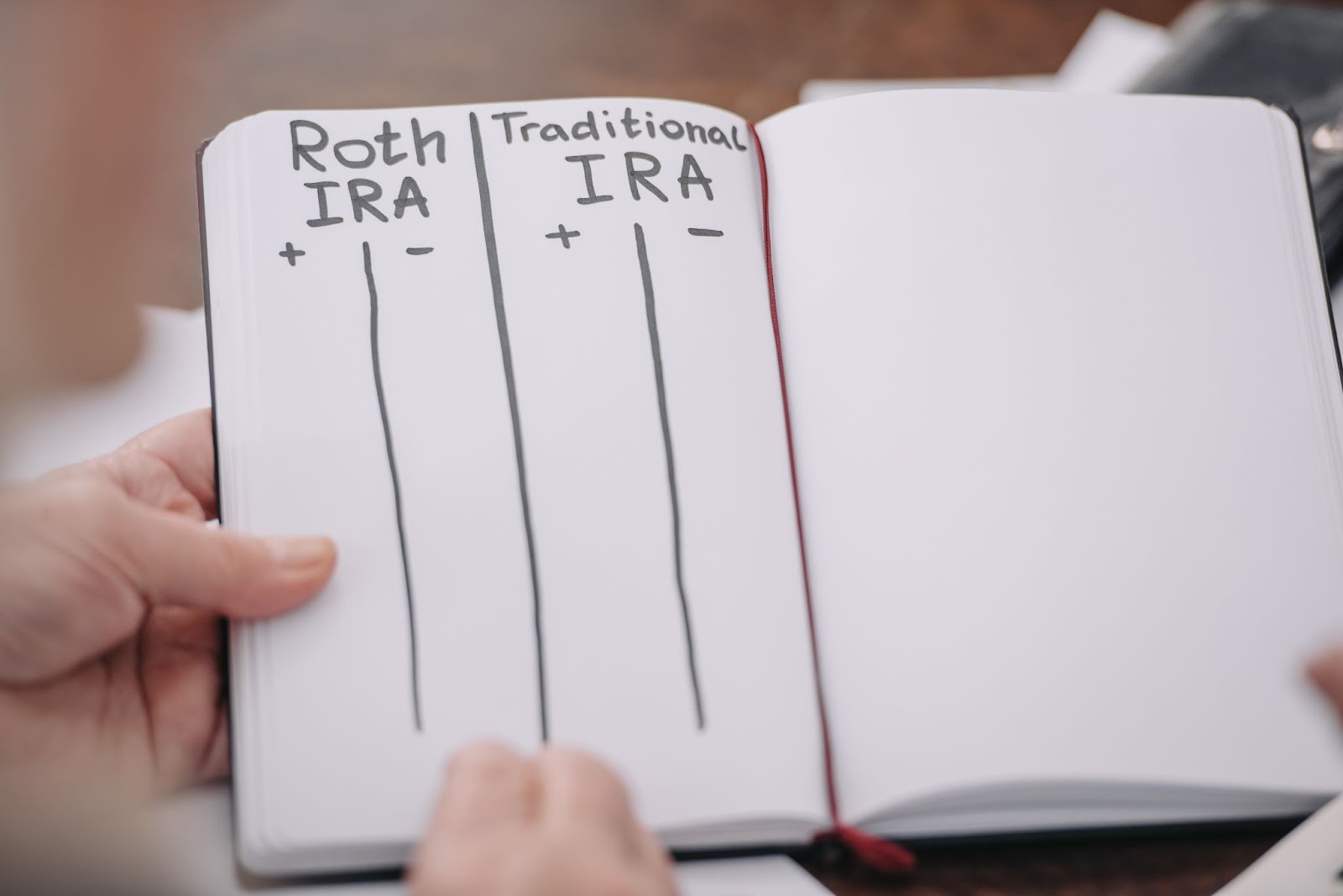Are IRAs Creditors Protected?
Yes, IRAs are protected from creditors, but the amount of protection varies based on federal bankruptcy laws, your state of residence, and the type of IRA you own.
Federal bankruptcy law insures traditional and Roth IRAs to $1,711,975 as of April 2025, and rollover employer plan IRAs have no limits on protection. Protection outside of bankruptcy, however, varies widely from state to state, and inherited IRAs generally do not have federal protection.
Individual Retirement Accounts are among the most precious possessions of many Americans who are retirement savers. With the rise in litigation and economic uncertainty, it is more important than ever to know whether your hard work retirement savings are exempted from creditors' clutches. The response is not that simple, however, since IRA creditor protection is a tangled web of federal and state legislation that can have a major impact on your financial welfare.

Understanding IRA Creditor Protection Basics
IRA creditor protection is the legal shield that protects your retirement account from bankruptcy, lawsuits, and creditors. It is both federal and state-based, but it functions differently based on your individual situation.
The government provides security through the Bankruptcy Abuse Prevention and Consumer Protection Act of 2005 (BAPCPA) that established nationwide bankruptcy protections for retirement accounts. This was a significant step forward since before 2005, protection for IRAs relied solely on state statutes, creating a hodgepodge of varied protections across the country.
The protection works by keeping qualified retirement funds outside of consideration in your bankruptcy estate. This means that creditors cannot make you dispose of these protected assets during bankruptcy to pay off your debt. The protection is, however, subject to limitations and exclusions that all IRA owners should know.
Federal Bankruptcy Protection for IRAs
Under federal bankruptcy law, Roth and conventional IRAs are protected up to $1,711,975 through April 2025, which is more than the previous limit of $1,512,350. This inflation adjustment occurs every three years, and the next one must be made by April 2028.
The federal cap is for the total amount of all your traditional and Roth IRAs, not each IRA individually. If you have multiple IRAs with more than the exemption value, any amount above the cap can be seized by bankruptcy trustees to pay creditors.
Importantly, this $1,711,975 limit does not include rolled-over money contributed to an IRA from employer-provided retirement schemes like 401(k)s. Federal bankruptcy protection is unlimited for Rollover IRAs with the same degree of safety they had when still within the original employer plan.
SEP IRAs and SIMPLE IRAs also have unlimited federal bankruptcy protection because they are technically qualified retirement plans under ERISA law. This places them on equal footing with traditional employer-sponsored plans as far as creditor protection is concerned.
State-Level IRA Protection Outside Bankruptcy
Federal law prescribes very strict rules for bankruptcy cases, but creditor protection outside of bankruptcy is within the purview of the states. This creates enormous differences in IRA creditor protection between states.
A few states provide full protection for IRAs on or above ERISA-qualified plans, and others provide minimal or no protection at all. The level of protection in your state can have a notable impact on your financial planning plan and your overall asset protection needs.
Strong IRA protective states are Texas, Washington, and Arizona. Under the law of Arizona, creditors can go after only the final 120 days' worth of contributions to retirement funds during bankruptcy, so all preceeding contributions have complete legal protection. Texas and Washington also provide maximum protection for IRA funds for judgment creditors.
On the opposite end are states like New Mexico and New Hampshire, where there are no laws protecting retirement savings from creditors beyond bankruptcy. In these states, IRA owners have nothing but their federal bankruptcy code and other requirements to rely on to still stay protected against creditors.
California presents a compelling middle ground in which a creditor may seize one's IRA if, in the opinion of the judge, the debtor has other resources on which he or she can rely in retirement. This subjective standard allows for a certain level of unpredictability among residents of California regarding the protection of their IRA.
Various IRAs and Protection Levels

Not all IRAs are equal under creditor protection. Understanding how different retirement accounts are treated in creditor protection laws is important to develop comprehensive financial planning.
Traditional and Roth IRAs
Traditional and Roth IRAs each have the same federal bankruptcy protection up to the limited sum, but state treatment may vary. Both account options are covered by the same $1,711,975 federal cap of bankruptcy protection and are regulated by state law for creditor protection aside from bankruptcy.
The similar treatment exists because each of these types of IRAs serves the same overall purpose of retirement savings, although differently with the tax treatment. Traditional IRAs provide tax-deductible contributions at the contribution time and taxed withdrawals at retirement, whereas Roth IRAs use post-tax contributions with tax-free qualified distributions.
Rollover IRAs
Rollover IRAs enjoy some of the strongest creditor protection available. Every rollover from an employer plan to an IRA is protected and does not count toward the federal protection limit. There is unlimited protection since rollover funds enjoy the same creditor protection the money enjoyed while part of the original ERISA-qualified employer plan.
Such protection is also given to rollovers from 401(k) and 403(b) plans and other qualified employer-sponsored retirement plans. The investment earnings on such rollover assets are equally accorded the same unlimited protection.
SEP and SIMPLE IRAs
SEP and Simple IRA accounts receive an exemption similar to employment plan IRA rollovers, but a SEP or Simple IRA rollover IRA only receives $1 million of protection against creditors. Such accounts often enjoy unlimited protection in cases of bankruptcy because they are ERISA-qualified plans.
SEP IRAs are easy employee pension plans that allow employers to contribute to employees' retirement accounts, while SIMPLE IRAs are savings incentive match plans for employees of small employers. Both contribute importantly to small business employee retirement planning.
Inherited IRAs
Inherited IRAs pose a large exception to IRA creditor protection. In June 2014, the U.S. Supreme Court handed down a unanimous decision in Clark v. Rameker that inherited IRAs are exempt from federal bankruptcy law. This landmark decision held that inherited IRAs are not "retirement funds" for bankruptcy purposes.
The Supreme Court also argued that inherited IRAs are fundamentally different from the conventional retirement accounts in some important respects. Inherited IRAs cannot be added to by beneficiaries, must be taken as minimum distributions at any age, and are not subject to early distribution penalties. These features cause inherited IRAs to act more like typical investment accounts than retirement savings instruments.
The protection does not apply if you inherit an IRA, except in one case — when you inherit from a spouse. Spousal survivors may roll over inherited IRA money into their IRA, which would be completely protected from creditors, or maintain the account as an inherited IRA.
Several states have amended their exempt property statutes to make it clear that inherited IRAs are not subject to creditor claims, including Alaska, Arizona, Florida, Idaho, Missouri, North Carolina, Ohio, and Texas. Most states, however, including Michigan, provide no protection for inherited IRAs against creditor claims.
Key Exceptions to IRA Creditor Protection

While IRA protection of creditors is generally robust, there are a few important exceptions that allow your retirement funds to be accessed by creditors even if they otherwise would be safe.
Government Claims
There are several qualified retirement plans or IRAs that can be subject to an IRS tax levy of past-due taxes and penalties. The federal government has broad authority to collect unpaid taxes and can reach protected retirement accounts if other collection means have been exhausted.
Federal restitution orders and criminal fines are also superior to IRA creditor protection. The government may seize protected retirement money to pay them back if you're convicted of a federal crime and ordered to pay restitution or fines.
Family Obligations
If you have an obligation of alimony or child support to your ex, they can attach your IRA funds even if you file for bankruptcy. Family support obligations usually trump asset protection plans, and there is broad discretion for courts to access retirement funds to secure support payments.
Qualified Domestic Relations Orders (QDROs) also divide retirement assets at the time of divorce. Retirement accounts are typically marital property, so they can be divided in divorce proceedings, depending on the state and personal situation.
Recent Contributions
Recent contributions, typically 90-365 days prior to bankruptcy, may be non-protected. This discourages people from loading up their retirement accounts with money right before they file for bankruptcy to shield assets from creditors.
The particular time frame differs from jurisdiction to jurisdiction, but courts will typically closely examine contributions made when a debtor knew or had reason to know that they were in financial trouble. This analysis of fraudulent transfer prevents the bankruptcy system from being used to conceal assets from fair creditors.
Strengthening IRA Creditor Protection

There are a number of methods that can potentially enhance the creditor protection of your retirement savings, but these always need to be implemented as part of overall asset protection planning drawn up with qualified specialists.
Self-Directed IRA LLCs
With a Self-Directed IRA LLC, there is an added layer of protection in the form of liability limitation, and it is harder for creditors to access your retirement account. This arrangement has your IRA invest in a limited liability company, which invests on behalf of the retirement account.
The LLC framework provides a second wall of protection between your own personal liability and your retirement money. If the framework and upkeep are properly done, it can be more difficult for creditors to access the underlying IRA assets, especially in non-bankruptcy situations.
Trust Beneficiaries
If you wish to leave your children or another loved one an inherited IRA, you must create an IRA trust and name the trust as a beneficiary in order to shield the funds from creditors. This approach can provide creditor protection that the Supreme Court held is not provided to direct beneficiaries of inherited IRAs.
Trust planning must be done to maintain the favor of tax treatment while providing protection from creditors. The trust must be properly designed so that it may be a named beneficiary under the required minimum distribution rules while providing the desired asset protection benefits.
Geographic Considerations
Your resident state greatly determines your IRA creditor protection beyond bankruptcy. In case creditor protection is an overriding concern and you are able to relocate where you live, relocating to a state whose IRA protection statute is more robust may be worth it.
However, relocation decisions have to consider many other factors beyond creditor protection, including state income tax, cost of living, and personal preference. Asset protection needs to be only one part of your total life and financial planning plan.
Planning Strategies and Best Practices

Successful IRA creditor protection requires planning ahead and a good understanding of how the different strategies work together to protect your retirement savings.
Maximize Rollover Protection
We learned through our research that all rollovers from employer plans to an IRA are protected and do not count toward the limit of how much you can protect. This makes rollovers one of the most potent solutions for enhancing IRA creditor protection.
When terminating employment, consider the creditor protection aspects of your distribution alternatives carefully. Rolling over money into an IRA can offer greater investment alternatives and management, but retaining money in a new employer's plan could afford greater creditor protection in certain states.
Separate Account Management
Consider holding rollover funds and typical IRA contributions in distinct accounts. The segregation will help maintain the unlimited creditor protection of rollover funds while distinctly separating them from limited contributions.
It is important to have precise documentation and titling of accounts to maintain these differentiations. Transact with qualified custodians who understand the importance of maintaining distinct forms of IRA funds.
Periodic Review and Update
The federal exclusion amount is increased for cost-of-living adjustments and for inflation every three years. Check your asset protection strategies from time to time to reflect changes in the law and your finances.
State laws likewise can shift, which might affect the level of protection your IRA assets have. Keep an eye on news about your state's exemption statutes and consider how changes might have an effect on your overall asset protection strategy.
Conclusion
IRA creditor protection offers strong but not complete protection for your retirement funds. Federal bankruptcy law shields traditional and Roth IRAs up to $1,711,975 through 2025 with unlimited protection for rollover IRAs. Protection outside of bankruptcy, however, ranges wildly on a state-by-state basis, and inherited IRAs typically enjoy no federal protection.
Educating yourself on these rules and planning accordingly can allow you to maximize the protection afforded to your retirement money. The key is having a comprehensive plan that takes into account your specific situation, home state, and overall financial goals.
Remember that asset protection is most effective when implemented prior to when you really need it. By knowing IRA creditor protection laws and seeking the counsel of expert advisors, you can be assured that your retirement money remains available to serve its purpose even in the case of unexpected financial hardships that may arise.
The environment of retirement account protection shifts with congressional reforms and judicial decisions. Staying current with developments and having your plans examined periodically by qualified professionals will keep your retirement money secure as laws and circumstances change.










